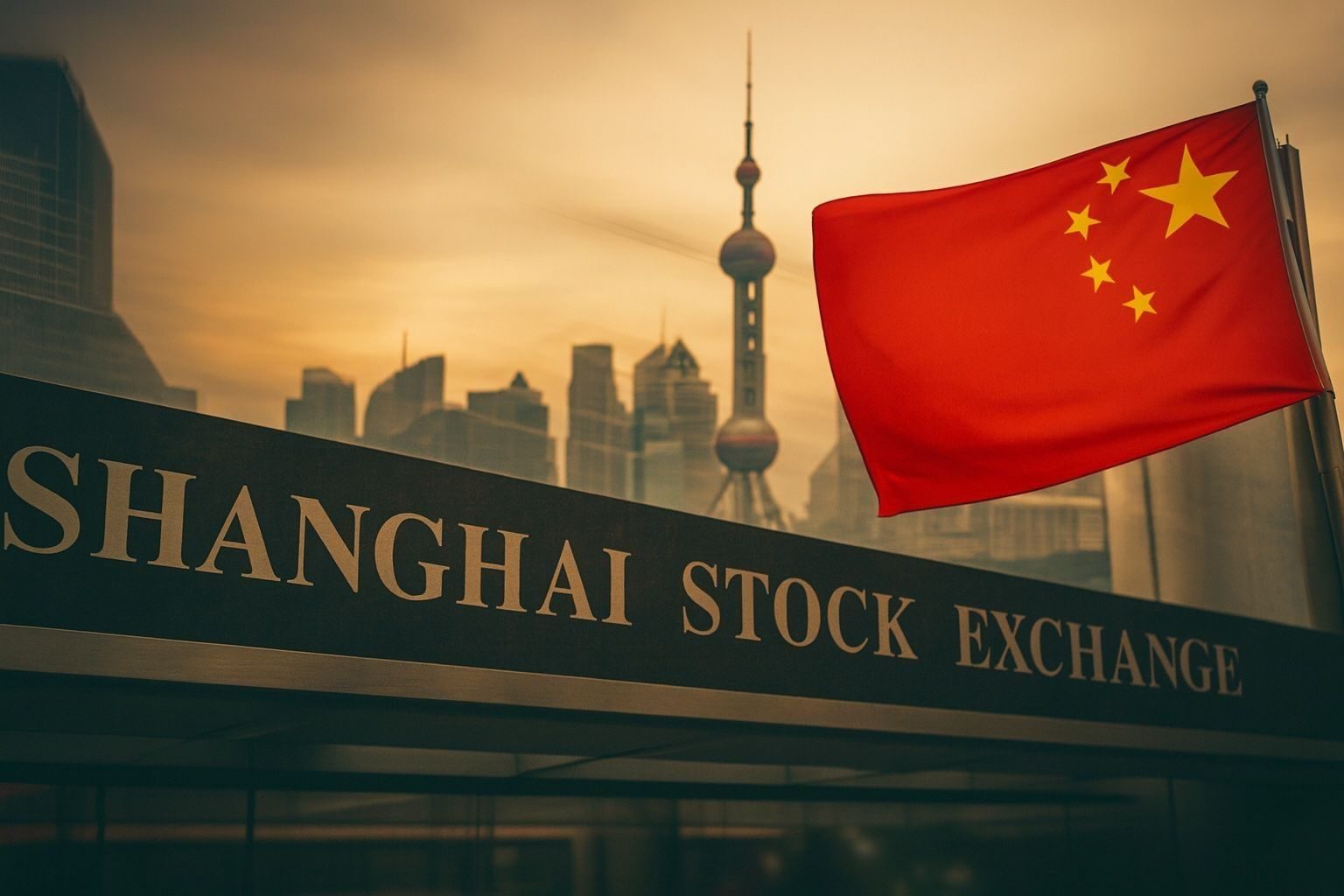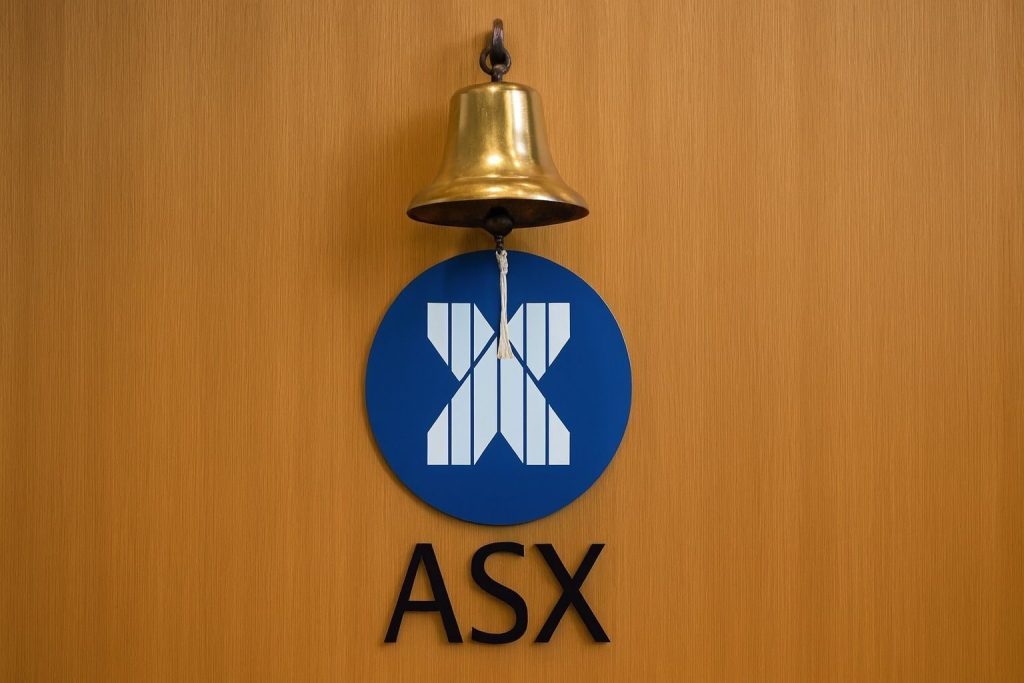On Monday, November 24, 2025, the China stock market delivered a mixed but eventful session: mainland benchmarks barely budged at the index level, even as defence and AI names jumped, while Hong Kong’s China-heavy indices rallied strongly on MSCI index changes and renewed hopes for a U.S. Federal Reserve rate cut in December. [1]
Key Takeaways for November 24, 2025
- Shanghai Composite inched up 0.05% to around 3,836.77, after briefly touching a six‑week low intraday. [2]
- Shenzhen Component added 0.37% to 12,585.08, while the ChiNext Index gained 0.31% to about 2,929.04. [3]
- CSI 300 blue‑chip index slipped 0.12% to 4,448.05, reflecting lingering caution despite sector pockets of strength. [4]
- Hong Kong’s Hang Seng Index jumped 1.97% (≈+496 points) to 25,716.50, with turnover around HK$302.6 billion; the Hang Seng China Enterprises Index rose 1.79% and the Hang Seng Tech Index surged 2.78%. [5]
- Defence, shipbuilding, AI and semiconductors led gains on both sides of the border, helped by geopolitical tensions with Japan and improving risk appetite tied to Fed‑cut expectations. [6]
- MSCI’s November 2025 index review took effect after Monday’s close, triggering sizeable passive flows into selected A‑shares and Hong Kong stocks. [7]
- In corporate news, JD.com’s industrial supply‑chain arm moved closer to a Hong Kong IPO of up to US$500 million, while Syngenta considered shifting a long‑planned listing from Shanghai to Hong Kong, underscoring the “slow bull” policy on the mainland. [8]
Mainland China: Headline Indices Flat, Defence Names on the Front Line
Benchmarks: Small Move, Big Message
Mainland China’s major equity gauges barely moved by the close, masking a notable rotation beneath the surface:
- Shanghai Composite Index: +0.05% at 3,836.77
- Shenzhen Component Index: +0.37% at 12,585.08
- ChiNext Index (growth board): +0.31% at 2,929.04 [9]
Turnover on the Shanghai and Shenzhen exchanges totalled about 1.73 trillion yuan, down from nearly 1.97 trillion yuan on the previous trading day, suggesting some investors stayed on the sidelines after last week’s pullback. [10]
The CSI 300, which tracks large‑cap A‑shares in Shanghai and Shenzhen, dipped 0.12% to 4,448.05. That left blue‑chips effectively flat but still not far above recent lows, even as global equities caught a stronger bid. [11]
Sector Moves: Defence, Shipbuilding and AI Take the Lead
Under the calm index surface, investors were busy repositioning:
- Defence and shipbuilding stocks were the standout winners after China’s foreign minister said Japan had “crossed a red line” with comments about possible military involvement over Taiwan, escalating a diplomatic row and highlighting long‑term defence spending themes. [12]
- The CSI Defence Index climbed roughly 3.5% on the day, while dedicated AI and semiconductor indicesadvanced around 0.8% and 1.8%, respectively, as chips rebounded from earlier losses linked to potential easing of U.S. export restrictions on NVIDIA’s H200 AI processors. [13]
- By contrast, energy and metals shares were under pressure, dragging on materials and resource‑heavy parts of the market. [14]
In short, Monday was less about broad‑based buying and more about targeted rotation into geopolitical and tech themes, as investors tried to front‑run potential policy and demand shifts.
Hong Kong: MSCI Rebalance and AI Hype Spark a Broad‑Based Rally
Index Performance: Tech‑Heavy Bounce
Hong Kong, where many leading Chinese firms are listed, staged a much more dramatic rebound than the mainland:
- Hang Seng Index (HSI): +1.97% to about 25,716.5
- Hang Seng China Enterprises Index (HSCEI): +1.79% to 9,079.42
- Hang Seng Tech Index (HSTECH): +2.78% to around 5,545.56 [15]
Turnover on the Hong Kong stock market jumped to roughly HK$302.6 billion, well above normal levels and around 123% of the one‑year average, mirroring the impact of MSCI’s semi‑annual index reshuffle. [16]
Southbound investors from the mainland were net buyers via Stock Connect, ploughing an estimated US$1.1 billioninto Hong Kong shares, according to flow data compiled by China-focused strategists. [17]
Drivers: Fed Doves, MSCI Flows and AI Optimism
Several catalysts converged on Monday’s session:
- Dovish Fed Expectations
Recent comments by senior Federal Reserve officials boosted market bets on a December 2025 U.S. rate cut, improving risk appetite globally and fuelling demand for growth and tech stocks across Asia. [18] - MSCI November Index Review
MSCI’s November 2025 index changes — affecting the MSCI China, China A Onshore and China All Sharesbenchmarks — took effect after the close on November 24. Passive funds tracking these indices had to rebalance, generating heavy trading in many large‑cap Chinese counters and reinforcing the squeeze higher in Hong Kong. [19] - AI and Internet Leaders Outperform
- Alibaba jumped about 4.7% in Hong Kong, becoming the most heavily traded stock by value, as its Qwen AI assistant app surpassed 10 million downloads in a week, stoking enthusiasm for China’s homegrown AI ecosystem. [20]
- Kuaishou rallied more than 7%, NetEase rose nearly 6%, and other internet platforms such as Baidu, Meituan and Bilibili also logged strong gains. [21]
- AI‑application plays like iDreamSky and other niche software names surged between 5–9%, benefiting from a wave of optimistic broker research on the commercialisation of AI models. [22]
- Defence, Autos and Biopharma Rally; Chips Lag
- Hong Kong‑listed defence names such as CSSC Offshore & Marine jumped over 13%, while other aerospace and defence firms gained between 4–7%, reflecting the same geopolitical tailwinds seen onshore. [23]
- Auto makers rallied following the 2025 Guangzhou Auto Show, where new energy vehicles and solid‑state battery announcements drove double‑digit moves in some OEMs. [24]
- Biopharma names outperformed after index inclusions in Hong Kong benchmarks, with some stocks spiking around 30%. [25]
- On the downside, chipmakers like Huahong Semiconductor and SMIC weakened, influenced by ongoing uncertainty around U.S. export controls, while oil & gas and solar stocks ended lower. [26]
Overall, Hong Kong’s session looked like a classic “risk‑on + rebalance” day, with tech, defence and autos in demand and deep cyclical sectors left behind.
IPO and Policy Backdrop: Hong Kong’s Edge Over Mainland Listings
Beyond daily price action, Monday’s China‑related news flow also highlighted a shifting capital‑raising landscape:
- JingDong Industrials (JDi), JD.com’s industrial supply‑chain unit, began sounding out investors for a Hong Kong IPO of up to US$500 million, potentially pricing on December 8 and listing on December 11, subject to market conditions. [27]
- A Reuters Breakingviews column noted that Syngenta Group, owned by state‑backed Sinochem, is considering moving its long‑delayed multibillion‑dollar IPO from Shanghai to Hong Kong. The analysis argues that Beijing’s preference for a “slow bull” — gradual price appreciation and tighter scrutiny of large domestic listings — has steered major issuers offshore, where Hong Kong has raised over US$48 billion this year versus just under US$10 billion in Shanghai. [28]
These stories reinforce a broader theme: policy makers want stable, not frothy, mainland markets, which can make domestic IPO approvals and valuations more conservative. For investors, that means Hong Kong remains a key venue for accessing China’s growth stories, even as the underlying businesses are predominantly mainland‑focused.
Macro and Geopolitics: Why Markets Still Look Nervous
Even with Monday’s rebounds, sentiment around China’s stock market is far from euphoric.
Fed and Global Macro
- Markets are now pricing a high probability of a U.S. rate cut in December, following a series of dovish signals from Fed officials and softer labour‑market data. [29]
- Lower U.S. yields tend to support emerging‑market and China assets by easing dollar pressure and improving the relative appeal of higher‑risk equities.
China’s Domestic Data and PMI Watch
- Ahead of upcoming official PMI readings, strategists highlighted that previous Chinese data on trade, retail sales and fixed‑asset investment had been underwhelming, with manufacturing PMIs stuck below the expansion threshold of 50 since April and services only marginally above it. [30]
- That backdrop explains why turnover fell onshore and why the CSI 300 slipped even as Shanghai eked out gains: investors are still wary about the durability of China’s recovery and the extent of future stimulus.
Japan–China Tensions Over Taiwan
- China’s foreign minister’s warning that Japan had “crossed a red line” with remarks about potential military involvement over Taiwan, combined with criticism of Tokyo’s plan to deploy missiles on Yonaguni Island near Taiwan, added a geopolitical risk premium that favoured defence‑related stocks. [31]
In other words, Monday’s moves were not a clean vote of confidence in China’s growth story; they were also a hedge against geopolitical risk and a response to global liquidity hopes.
What Monday’s Session Means for China Stock Market Investors
From a medium‑term perspective, Monday’s action in the China stock market suggests several themes:
- Bottom‑Fishing, Not a Breakout
Shanghai’s move of +0.05% and a slightly lower CSI 300 underscore that mainland indices remain fragile after recent declines. Bargain‑hunting is focused on specific themes (defence, AI, autos) rather than broad buying across the board. [32] - Hong Kong as a Beta Play on China + Global Liquidity
When global risk appetite improves — as it did on renewed Fed‑cut expectations — Hong Kong reacts more violently than the mainland, especially in internet and tech names. Monday’s 1.97% Hang Seng jump versus Shanghai’s near‑flat close is a textbook example. [33] - Index Events Matter
The MSCI November review shows how index rebalances can overshadow fundamentals in the short run, driving large flows into and out of particular names. For traders, understanding the index calendar remains crucial in China. [34] - “Slow Bull” Policy Keeps Mainland Valuations in Check
The Syngenta and JDi stories highlight that Beijing’s cautious stance on big domestic IPOs can divert deals to Hong Kong, while still signalling an intention to avoid boom‑and‑bust cycles onshore. That may cap the speed of any mainland rally but could improve its durability if growth stabilises. [35]
This article is for general information and news purposes only and does not constitute investment advice. Investors should conduct their own research or consult a licensed advisor before making trading decisions.
What to Watch Next
Looking beyond November 24, here are the key catalysts that could shape the China stock market over the coming days and weeks:
- Official Chinese PMIs and other high‑frequency data, which will test whether recent policy support is gaining traction in the real economy. [36]
- Further Fed communication ahead of the December FOMC meeting — any pushback against market pricing of cuts could re‑ignite volatility in growth and tech stocks globally, including China. [37]
- Clarifications on U.S. export‑control rules for advanced AI chips, which will be crucial for the outlook of Chinese semiconductor and AI hardware makers. [38]
- Progress on key IPOs such as JingDong Industrials and any concrete move by Syngenta toward a Hong Kong listing. Demand for these deals will offer a real‑time read on global investor appetite for Chinese risk. [39]
- Ongoing Japan–China–Taiwan tensions, especially around military deployments and diplomatic rhetoric, which could keep defence‑related stocks in focus and add a risk premium to the region. [40]
For now, November 24, 2025 will go down as a day when China’s stock markets stabilised at the surface but churned beneath, with geopolitics, global liquidity, and index mechanics all tugging investors in different directions.
References
1. english.news.cn, 2. www.investing.com, 3. english.news.cn, 4. finance.yahoo.com, 5. www.investing.com, 6. english.news.cn, 7. news.futunn.com, 8. www.reuters.com, 9. english.news.cn, 10. english.news.cn, 11. finance.yahoo.com, 12. www.indopremier.com, 13. www.indopremier.com, 14. english.news.cn, 15. www.investing.com, 16. news.futunn.com, 17. chinalastnight.com, 18. www.reuters.com, 19. news.futunn.com, 20. news.futunn.com, 21. news.futunn.com, 22. news.futunn.com, 23. news.futunn.com, 24. news.futunn.com, 25. news.futunn.com, 26. news.futunn.com, 27. www.reuters.com, 28. www.reuters.com, 29. www.reuters.com, 30. www.ig.com, 31. www.reuters.com, 32. www.indopremier.com, 33. news.futunn.com, 34. news.futunn.com, 35. www.reuters.com, 36. www.ig.com, 37. www.reuters.com, 38. news.futunn.com, 39. www.reuters.com, 40. www.reuters.com










